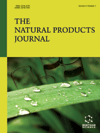
Full text loading...
Atherosclerosis (AS) is a chronic disease with worldwide incidence. The current study was conducted to highlight the molecular pathogenesis of AS and equally effectiveness of cynodon dactylon–(tm)s ethanolic extract (CDE) on the AS-induced injuries.
Atherosclerosis was induced experimentally in healthy male rats with a hypercholesterolemic diet (HCD) for 24 weeks. The HCD-received animals were either treated with normal saline or various doses of CDE and/or atorvastatin. After 24 weeks of the treatment period, the effects of HCD on lipid profile, oxidative/nitrosative stress status, inflammatory enzymes (LDH, ALP and CK-MB) activities, trimethylamine oxide (TMAO) concentration in serum along with the expression of TLR-4 (qPCR) and CD31 (Immunohistochemistry) in coronary and aorta were analyzed.
CDE was able to reduce the HCD-enhanced cholesterol and triglycerides. The HCD-elevated activities of LDH, ALP and CK-MB were declined by CDE. The antioxidant potency of CDE was comparable with atorvastatin on HCD-induced oxidative/nitrosative stress. The serum concentration of TMAO was lowered (1.7-fold) by CDE in a dose-dependent manner, while CD31 expression in the endothelial of coronary arterials and aorta in CDE and atorvastatin-received animals was remarkably increased. The up-regulated expression of TLR-4 (2.5-fold) at mRNA level was regulated significantly (p < 0.05) and returned to normal level by CDE treatment.
Results of the current study indicate that the up-regulation of TLR-4 as a main inflammatory gene and elevation of TMAO are involved in the pathophysiology of AS. Moreover, the protective effects of CDE on AS may be attributed to its anti-inflammatory and hypolipidemic properties.

Article metrics loading...

Full text loading...
References


Data & Media loading...

